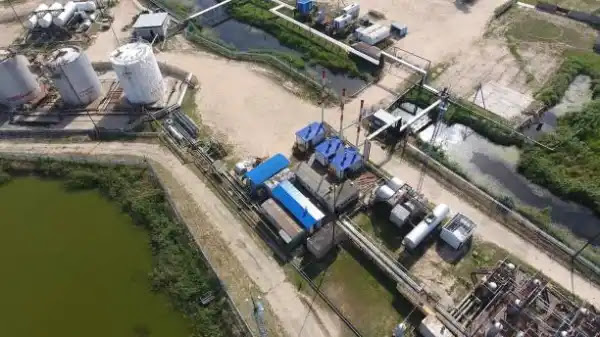Featured
- Get link
- X
- Other Apps
Sustainable Approach for Contaminated Soil Remediation
Trickle Technology: Contaminated Soil Remediation
Introduction
Contaminated soil poses significant environmental and public
health risks, necessitating effective remediation strategies to restore soil
quality and mitigate adverse impacts. Trickle technology, also known as drip
irrigation, emerges as a promising and sustainable approach for remediating
contaminated soil by facilitating the controlled delivery of water, nutrients,
and remediation agents directly to the root zone of plants. This article
explores the application of trickle technology in contaminated soil
remediation, its benefits, implementation considerations, and potential for
addressing environmental challenges.
Challenges of Contaminated Soil Remediation: Contaminated soil poses a
range of challenges, including
- Toxicity:
Contaminants such as heavy metals, organic pollutants, and pesticides can
accumulate in soil, posing risks to human health, ecosystems, and food
safety.
- Spread:
Contaminants can spread through soil erosion, leaching, and groundwater
movement, exacerbating environmental contamination and impacting
surrounding areas.
- Cost:
Traditional soil remediation methods, such as excavation and disposal, can
be costly, resource-intensive, and disruptive to ecosystems and
communities.
- Longevity:
Soil contamination can persist for years or even decades, necessitating
long-term remediation strategies to achieve desired outcomes.
Benefits of Trickle Technology in Contaminated Soil Remediation: Trickle
technology offers several benefits for remediating contaminated soil
- Targeted
Delivery: Trickle irrigation delivers water, nutrients, and remediation
agents directly to the root zone of plants, minimizing wastage and
ensuring effective uptake by plant roots.
- Enhanced
Plant Uptake: Plants can uptake and accumulate contaminants from soil, a
process known as phytoextraction. Trickle irrigation enhances
phytoextraction by promoting root growth, increasing plant biomass, and
facilitating contaminant uptake and translocation to above-ground plant
tissues.
- Soil
Stabilization: Trickle irrigation promotes soil stabilization by enhancing
root growth and soil structure, reducing erosion, and preventing
contaminants from spreading to surrounding areas.
- Sustainable
Approach: Trickle technology is a sustainable and environmentally friendly
approach to soil remediation that minimizes disturbance to ecosystems,
reduces resource consumption, and promotes ecological restoration.
Implementation Considerations for Trickle Technology in Contaminated Soil
Remediation: Effective implementation of trickle technology for contaminated
soil remediation requires careful planning and consideration of various factors
- Site
Assessment: Conduct a comprehensive site assessment to characterize soil
contamination, identify contaminants of concern, and assess site
conditions, including soil type, hydrology, and vegetation.
- Plant
Selection: Select appropriate plant species for phytoremediation based on
their tolerance to contaminants, ability to accumulate contaminants, and
suitability for the site conditions. Native and adapted plant species are
often preferred for their resilience and ability to thrive in local
environments.
- Irrigation
Design: Design an irrigation system tailored to the site-specific
conditions, including soil texture, slope, and contaminant distribution.
Consider factors such as water quality, flow rates, irrigation scheduling,
and distribution uniformity to optimize water and nutrient delivery to
plants.
- Remediation
Agents: Select suitable remediation agents, such as organic amendments,
chelating agents, or microbial inoculants, to enhance soil remediation and
support plant growth. Incorporate these agents into the irrigation system
to deliver them directly to the root zone of plants.
- Monitoring
and Management: Implement a monitoring and management plan to track soil
and plant parameters, such as contaminant concentrations, plant growth,
and soil moisture levels. Regular monitoring allows for adjustments to
irrigation scheduling, nutrient application, and remediation strategies to
optimize remediation effectiveness and ensure project success.
Case Studies and Success Stories: Several case studies and success stories
demonstrate the effectiveness of trickle technology in contaminated soil
remediation
- Phytoremediation
of Heavy Metals: In a study conducted in contaminated mining sites in
Spain, researchers successfully remediated soil contaminated with heavy
metals using trickle irrigation and selected plant species. The study
demonstrated significant reductions in soil metal concentrations and improved
soil quality over time, highlighting the potential of trickle technology
for sustainable soil remediation.
- Urban
Brownfield Remediation: In urban brownfield sites contaminated with
petroleum hydrocarbons, researchers used trickle irrigation combined with
soil amendments and selected plant species to remediate soil
contamination. The study showed substantial reductions in soil hydrocarbon
concentrations and improved soil health, demonstrating the efficacy of
trickle technology for urban soil remediation projects.
- Agricultural
Land Remediation: In agricultural lands contaminated with pesticides and
agrochemicals, researchers implemented trickle irrigation combined with
phytoremediation techniques to remediate soil contamination and restore
soil fertility. The study reported significant reductions in soil
pesticide concentrations and enhanced soil microbial activity,
highlighting the potential of trickle technology for sustainable
agricultural land remediation.
Conclusion
Trickle technology offers a sustainable and effective
approach for remediating contaminated soil by promoting plant uptake of
contaminants, enhancing soil stabilization, and supporting ecological
restoration. By delivering water, nutrients, and remediation agents directly to
the root zone of plants, trickle irrigation minimizes wastage, maximizes
remediation effectiveness, and promotes environmental sustainability. With
careful planning, implementation, and monitoring, trickle technology can be a
valuable tool for addressing soil contamination and advancing sustainable land
management practices.
- Get link
- X
- Other Apps
Popular Posts
Air Filter Created That Can Kill the Coronavirus – 99.8% Effective on SARS-CoV-2
- Get link
- X
- Other Apps


